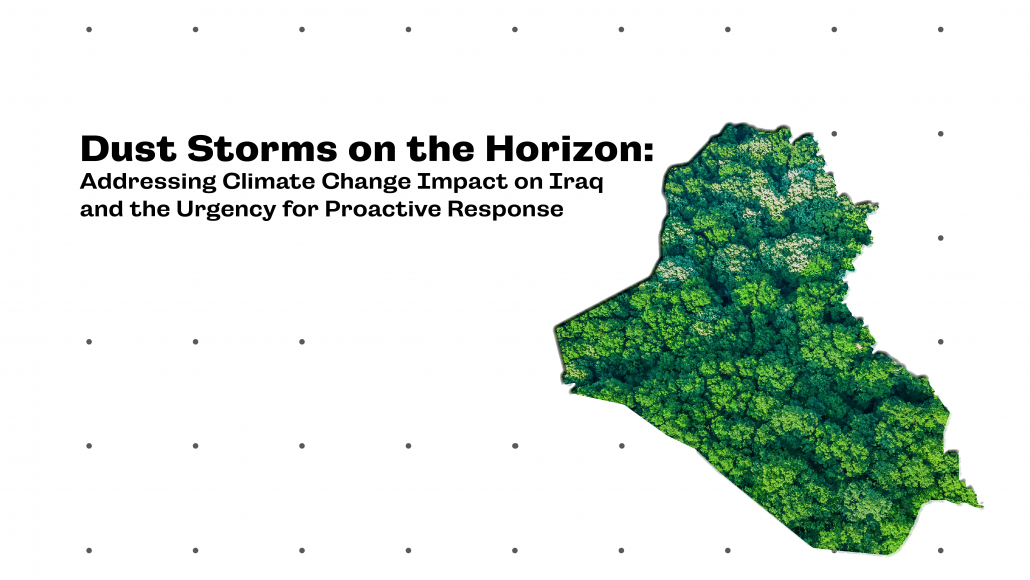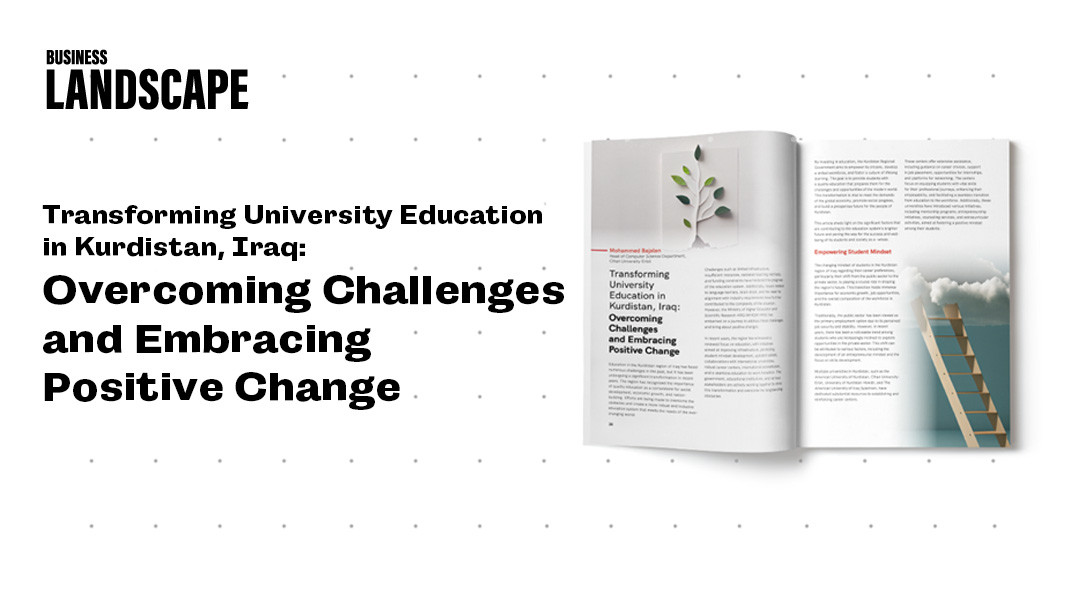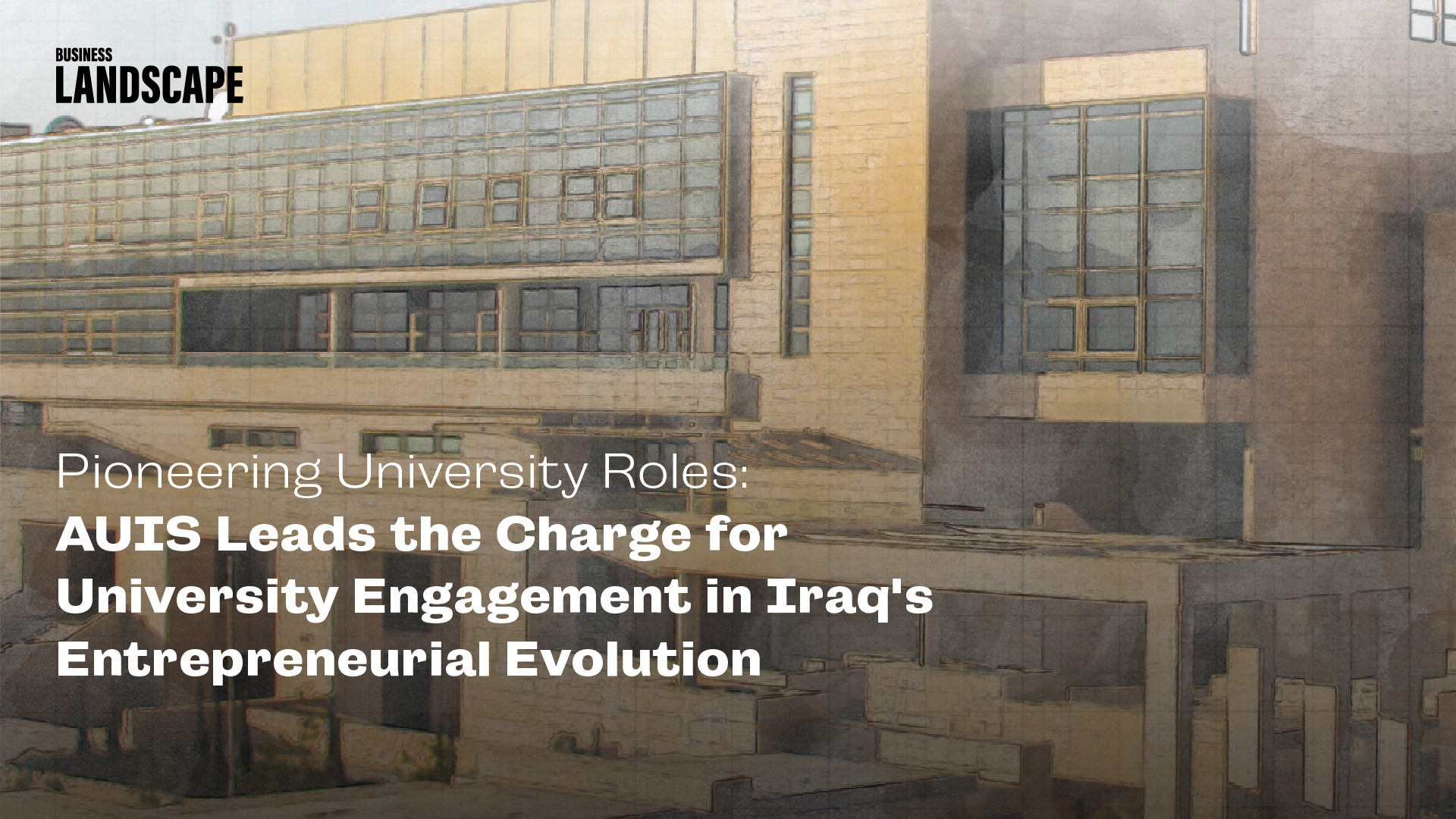Dust Storms on the Horizon: Addressing Climate Change Impact on Iraq and the Urgency for Proactive Response
Dr. Hayder Mohammed Abdul-Hameed
Assistant Professor, University of Baghdad, Department of Environmental Engineering
The effects of climate change on the various Iraqi sectors have become widely known, and they have cast a shadow over the general life in Iraq, especially in light of the country’s fragile conditions and dilapidated infrastructure. Projections based on national numerical climate models indicate that temperatures have steadily risen since 2007, starting at 0.9°C. If current trends continue, it could reach a startling 3.5 °C in the year 2100, which would be a critical situation in a country where temperatures often soar beyond 50°C on several summer days. Additionally, annual precipitation rates are expected to experience a significant and ongoing decrease, potentially reaching as low as a 30% drop by 2100, less than its rate throughout the period between 1938-1978, according to the predictions of the General Authority. According to the Iraqi Meteorological Organization & Seismology Department, this highlights the increase in the occurrence of heat waves, drought, and heavy rainfall, which have a ripple effect, for instance, the large waves of drought that led to amplified desertification. Desertification, in turn, has caused a rise in dust and dust storms, which due to their severity, frequency, recurrence, and long duration, have led to a significant increase in the number of asthma cases in Iraq, especially among children and the elderly. Other diseases and cancers have noticeably upsurged in numbers. In addition, climate change has exacerbated the problem of water scarcity in the Tigris and Euphrates rivers and their tributaries. The World Bank estimates for the year 2011 indicated a serious shortage and scarcity in renewable water sources for Iraq compared to the actual need during the period from 2000 to 2009. The water deficit is expected to reach 37% from 2020 to 2030 and escalate to 51% from 2040 to 2050. This explains the reason for the major collapse in the agricultural sector, which had a pronounced effect on agricultural production, Iraq's economy, natural systems, biodiversity, and caused a loss in the vegetation cover. On the seaside, the country's marine coastal areas overlooking the Arabian Gulf, especially in Basra Governorate, face a threat from rising sea levels, water warming, and their impact on the coral reefs and biodiversity in the marine environment, together with the loss of coastal lands. Furthermore, it affects the energy sector, as Basra Governorate is the main center of oil wealth in Iraq. This has placed more pressure on the national economy and put the country's stability at risk, making it difficult to achieve sustainable development in all its vital sectors and hindering our aspirations for sustainable growth and economic progress. The combined and intertwined issues call for rapid intervention and solutions based on nature to save these natural systems, as they have been, and continue to be, the main contributors to stability. The climate of Iraq and the world, especially in the last ten decades, has exacerbated the fragility of the national situation, leading to Iraq’s classification as one of the world’s fifth most vulnerable countries to decreased water and food availability, extreme temperatures and associated health problems, according to the sixth report of the Global Environment Outlook for West Asia (GEO-6).
There is a need in Iraq to prepare and implement an action plan for adaptation measures to address the impacts of climate change on the main sectors. This plan should align with existing national and sectoral strategies, such as the National Water Strategy, National Agriculture Strategy, National Biodiversity Strategy and National Framework for Integrated Drought Risk Management.
Iraq must strive to enhance its national capacity to face the effects of climate change across various sectors and on different levels, with a focus on the most vulnerable and susceptible areas, including the following:
1. Water Resources:
There must be an effort to push for sustainable investment in groundwater to preserve it for future generations by harvesting water and reducing its loss. The application of modern technologies to monitor and control groundwater reservoirs and assess their quality is essential to maintain the pH balance of groundwater in general. The desalination of seawater, and river water, if necessary, should be realized through the use of renewable energy sources to power desalination plants and the development of new technologies for this purpose. Moreover, several dams and underground reservoirs should be built to collect and distribute water during dry seasons, reduce flood risks, and replenish and sustain the groundwater-bearing subterranean layers.
2. Agriculture Sector:
When it comes to agriculture, the effort should be directed toward reducing the degradation of soil, pastures, and vegetation cover. This is to be done by rehabilitating them, improving land management practices, and adopting smart and conservative agriculture, especially in the field of agriculture and forestry. Additionally, the modernization, improvement and advancement of agricultural practices, as well as livestock breeding should be fulfilled to meet the principles of adaptation and face the challenges posed by climate change. Furthermore, greenhouses, plastic farms, and laboratories for tissue replication of climate change-resistant varieties must be established.
The overarching goal is to increase the resilience of the agricultural sector against climate change. This will lead to protecting and enhancing the country's food security, reducing soil degradation, increasing agricultural revenues, achieving economic diversification, reducing poverty, and supporting rural women through the use of modern techniques and technologies as part of the progress toward sustainable development goals.
3. Health Sector:
The health sector must be strengthened to prevent diseases caused by climate change. This can be done by rehabilitating health-fragile and poor communities exposed to health risks and restoring their ability to withstand and adapt to the adverse effects of climate change.
In addition, we should raise health awareness among communities vulnerable to diseases related to climate change and support family health programs as well as fight endemic and epidemic diseases caused by climate change.
The overarching goal is to increase the health sector’s resilience to confront climate change. This is to be done by providing the necessary and comprehensive support to health institutions and infrastructure to enhance the national response and rehabilitate vulnerable communities and build their resilience and adaptation, which will contribute to sustainable development goals.
4. Natural Systems and Forests:
Efforts must be channeled to increase the number of natural reserves, taking into account the diversity of these reserves, to preserve as many endangered species and delicate ecosystems as possible. Laws and regulations must also be activated to ensure their protection. Forests should be rehabilitated, expanded, and managed in a sustainable manner to accomplish their role in protecting the environment and sequestering carbon. Furthermore, preserving the ecosystems that provide environmental services and using some of them to prevent environmental risks and disasters. Moreover, there has to be some scientific effort to work on the genetic improvement of productive plant species to create species with high tolerance to harsh conditions.
5. Sanitation and Waste Sector:
Sewage and drainage water should be treated and recycled to be used in the agricultural sector for restricted and unrestricted irrigation through tertiary treatment and utilized in the industrial and energy sectors. Also, model wastewater treatment plants should be established in villages and rural communities to produce water suitable for irrigation, as well as mobile plants for treating organic waste on-site to generate biogas and organic fertilizer. Furthermore, industrial wastewater treatment plants projects for large and medium industrial facilities should be supported to provide alternative and unconventional water sources and reduce river water pollution. Moreover, the sewage sector must be rehabilitated to bolster the water sector's resilience.
The required action and climate change combating measures and strategies must be viewed as a social and governmental responsibility. The damaging effects of climate change will have an all encompassing effect on the daily lives of individuals, communities, and all levels of government, and thus the responsibility is upon all.






